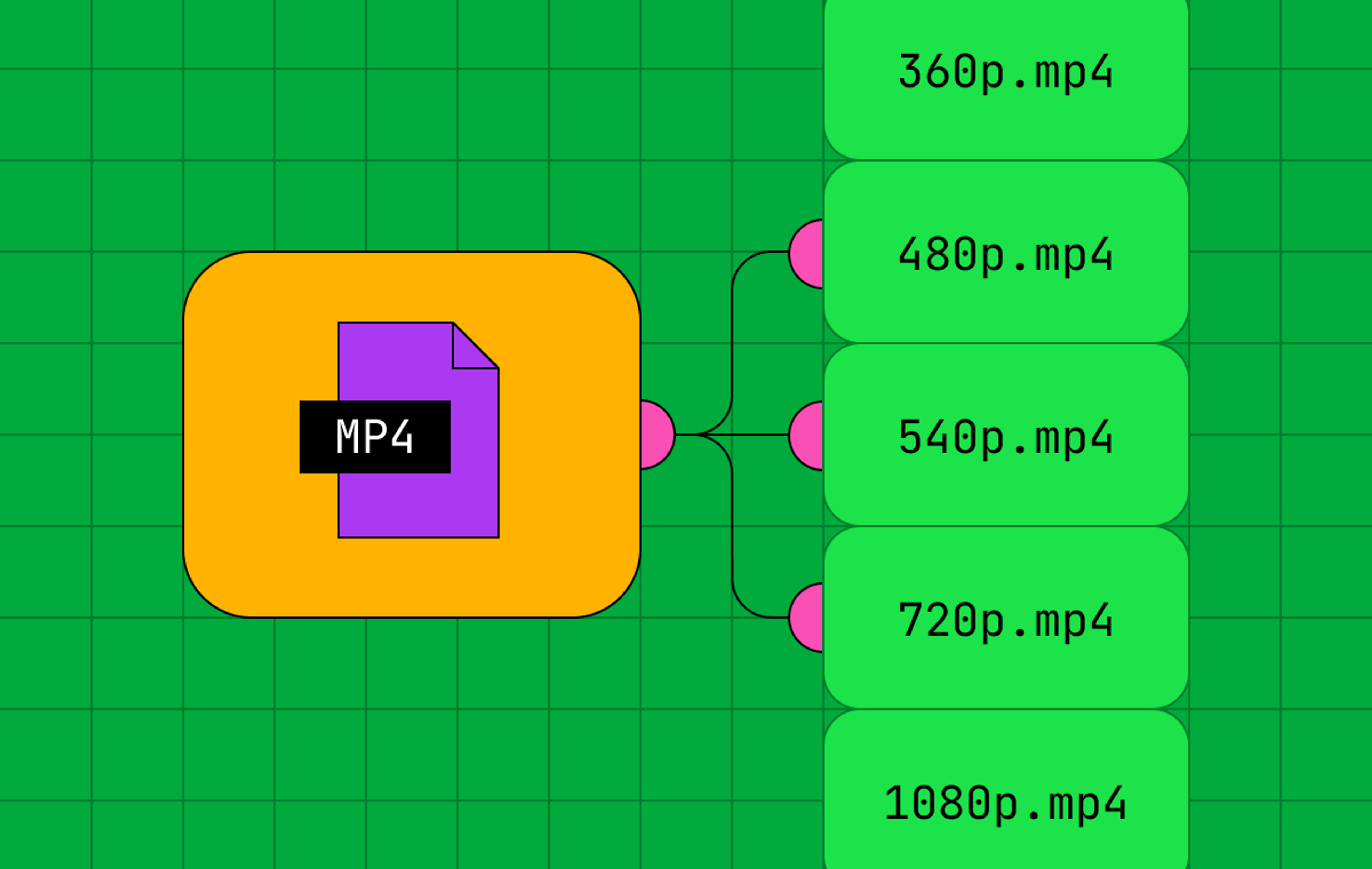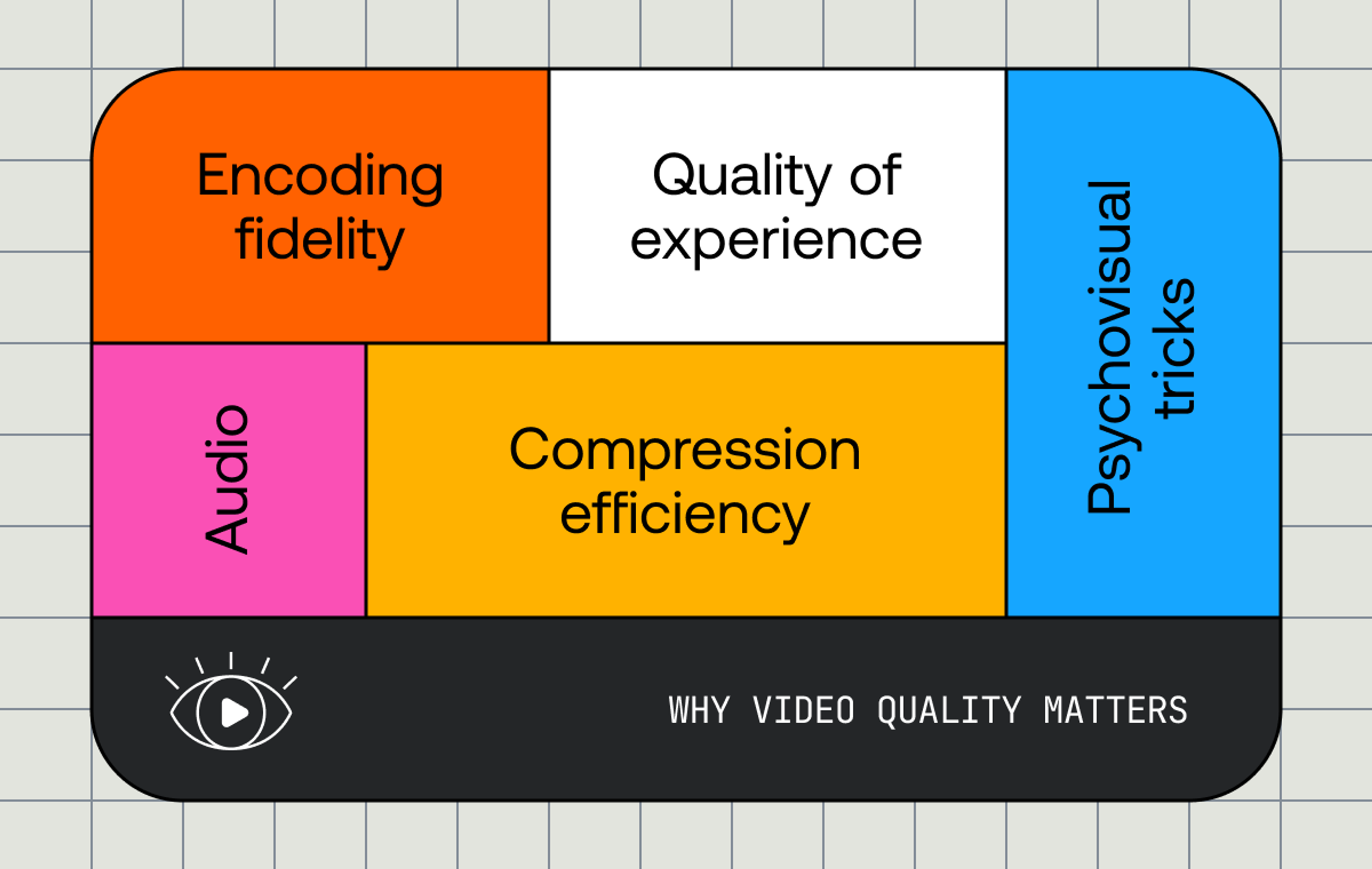"One size does not fit all". That's the core tenet of the original per-title encoding paper and blog, written by Netflix in 2015. If you don't want to read the whole thing, it boils down to this: If you encode every video in the same way, with the same static adaptive bitrate ladder, you're either wasting bandwidth or constrained on perceptual quality.
Under the hood, almost all long-form video streamed on the internet uses an adaptive bitrate (ABR) technology, like HLS or DASH (Mux uses HLS). Encoding a video for ABR delivery means encoding it in a variety of resolutions and bitrates, allowing the video player to select the most appropriate version (rendition) during playback, based on the viewer's available bandwidth.
When you're designing a streaming platform, one of the most important things you'll need to design is what's called your "ABR Ladder". This is the specific set of resolutions and bitrates that you transcode every video to before delivery — each of these combinations is often referred to as a "rung" on that ladder. The most basic video platforms use the same ABR ladder for every video.
But what happens if your videos don't all need the same encoding settings? It happens more often than you think.
Say you have a high-complexity video of a football match, you'll need to configure your ABR ladder with a high bitrate to make sure the video looks good because there's lots of fast motion, quick cuts, and detail in the grass pitch.
But you might also have a low-complexity video in the mix on your platform, for example, the news conference after that football match. If you used the same ABR ladder you used for the main event, you're probably wasting a lot of bitrate to get diminishing returns of increase in perceptual quality for the news conference, all while increasing your costs for storage and delivery.
Of course, you could manually tag every video with its content type, but that takes time and relies on users to accurately describe their content. Or you could ask an AI model to try to identify some content instead, but that can get slow and expensive really quickly.
Over the last 6 months, we've been progressively rolling out a new approach to per-title encoding for VOD assets uploaded to Mux — we started with standard inputs, and we've recently unlocked per-title for non-standard inputs too.
Mux's per-title encoding works a little differently from lots of other solutions you might have seen. Rather than using a content classification approach, we look at the complexity of information encoded into the content you upload. This complexity measurement is then fed into an AI model to decide the best ABR ladder and other encoding settings for every video.
The aim of Mux's per-title encoding is to target a consistent quality level, within a set of constraints, most prominently the maximum bitrate that the per-title model can use — these constraints are managed by the video quality level that you already know and love: basic (FKA baseline), and plus (FKA smart).
But there are times when the plus video quality level is not quite enough for your use case — maybe you're streaming that premium football match, or launching a new direct-to-consumer movie streaming service — that's what our newest quality level is for: premium.
Introducing the premium quality level
The new premium quality level is for when only the highest perceptual quality level is appropriate for your content.
Using the premium video quality level enables the per-title models to leverage higher bitrates and other encoding optimisations to unlock higher quality video outputs both at the top of the adaptive bitrate ladder, but also throughout the ladder.
Of course, one of the risks associated with blindly increasing the bitrates of content is viewability. As you increase the bitrate, fewer viewers' internet connections are able to maintain a stable stream without rebuffering. Good news — we’ve built this as a consideration into the premium quality level model! When the model predicts a peak bitrate above a viewability threshold, we'll also add an intermediary extra rendition into the ladder to make sure your viewers still have a great experience.
Let's take a look at the premium video encoding tier in action:
How to make your videos premium
Just like the basic and plus quality levels, premium quality can be selected for each on-demand asset. With this release, we’ve also unlocked premium quality for live streams too! You're in full control to choose what streams are most important to you and your viewers. You can also set a default video quality for your Mux account — that way if you know all your content is going to fit one consistent use case, you can just set it once, and forget it!
Setting the premium quality level on an asset is really simple, just just set the video_quality field in your asset to premium:
// POST /video/v1/assets
{
"input": "https://storage.googleapis.com/muxdemofiles/mux-4k.mp4",
"playback_policy": [
"public"
],
"video_quality": "premium",
"max_resolution_tier" : "2160p"
}And of course, if you're using a direct upload, that's easy to do too.
If you're creating a live stream, you're now able to set the video_quality, through the new_asset_settings.video_quality field just like when you use direct uploads. This quality level then applies to both the live stream and any on-demand assets from the stream.
// POST /video/v1/live-streams
{
"playback_policy": [
"public"
],
"new_asset_settings": {
"playback_policy": [
"public"
],
"video_quality": "premium"
}
}Premium on-demand assets can still be used with maximum resolutions up to and including 4K, while live streams are still limited to 1080p for now, just like with plus. Please note, if you want to use premium quality for live, it will need to be set on a per-live stream level, no matter your default quality settings. Default quality settings only apply to on-demand assets.
Be sure to check out the full documentation for using different quality levels, which has been updated to include the new premium quality level. The premium quality level is compatible with all other features on the Mux Video platform, including DRM, multi-track audio, SRT, and instant clipping, making it ideal for building premium video experiences.
Time to get building
The premium video quality level is available to all self-service customers today. Customers on a Mux contract should contact their account team for more details.
The premium video quality level is priced at just 1.5x the plus quality level pricing for encoding, storage, and delivery — a small price to pay for such premium quality — and remember, you can select the quality level for every live stream and on-demand asset, so you be selective about which streams are most important to you, and your viewers. Check out our documentation for the full pricing information on all our quality levels.
So what will you build using the premium video quality level? Let us know.



